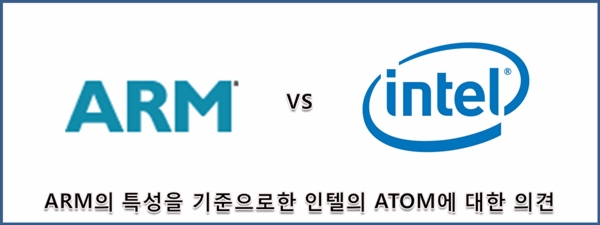Andrew Ku has been in the process
of reviewing a couple of new tablets: Samsung’s ATIV Smart PC 500T, with
an Atom Z2760 inside, and Samsung’s ATIV Tab, with Qualcomm’s APQ8060A.
I’ve been playing with Acer’s Atom-powered Iconia W510, and my initial
thoughts on that will go live soon.
One thing both Andrew and I are
impressed with is that the Atom-based tablets, running full versions
ofWindows 8, compete readily with Microsoft’s Tegra 3-powered Surface
when it comes to battery life, and doubly so when you consider Acer’s
W510 only has a 26.6 Wh battery compared to the Surface’s 31.5 Wh power
source.

As far as performance goes,
the Atom Z2760 (code-named Clover Trail) trades blows with
Nvidia’s Tegra 3in our Geekbench numbers, but then completely blows it
away in our Web browsing metrics. The fact that it’s able to
run x86-based apps fairly well is a clear benefit, too.
So, how do you get dramatically
better performance in certain tests, and then competitive run time in
those same workloads, all from a smaller battery? Answering that
question would have been quite a challenge. But then we asked Intel to
show us some of the advanced equipment in its own lab, which allows the
company to take very granular measurements.
While we were up in Santa Clara
last week, Intel presented us with data its performance analysis team
had generated, showed us how it generated that information, letting us
play with the test equipment ourselves, and discussed with us in great
depth Clover Trail’s strengths and weaknesses. Again, the following
numbers come from Intel’s team, not the Tom’s Hardware lab. We did
confirm that all displays were standardized to 200 cd/m2 (nits) using a
Gossen Luminance meter, though, and power consumption is reported as the
average over a 50 millisecond time slice. During the course of this
piece, we’ll break down Intel’s numbers and compare them what we’ve done
in our own offices, looking for connections.

| Idle: Microsoft Surface | ||||||
|---|---|---|---|---|---|---|
| Platform (W) | CPU (W) | GPU (W) | Memory (W) | Panel Backlight (W) | Everything Else (W) | |
| System Idle (Ideal):Windows 8 UI | 2.82 | 0.0038 | 0.21 | 0.25 | 0.98 | 1.38 |
| System Idle (Ideal): Desktop | 3.00 | 0.0047 | 0.21 | 0.25 | 1.11 | 1.42 |
| System Idle: Split Screen | 3.64 | 0.29 | 0.31 | 0.37 | 1.11 | 1.56 |
| Idle: Acer W510 | ||||||
|---|---|---|---|---|---|---|
| Platform (W) | CPU (W) | GPU (W) | Memory (W) | Panel Backlight (W) | Everything Else (W) | |
| System Idle (Ideal):Windows 8 UI | 2.47 | 0.02 | 0.11 | 0.29 | 0.84 | 1.22 |
| System Idle (Ideal): Desktop | 2.76 | 0.02 | 0.11 | 0.30 | 1.09 | 1.24 |
| System Idle: Split Screen | 3.37 | 0.18 | 0.24 | 0.36 | 1.14 | 1.45 |
For each tablet, Microsoft’s
Surface and Acer’s W510, we’re looking at power consumption on
the Windows 8UI, the Windows 8 Desktop, and a split-screen scenario,
where a Windows 8 app is open on one side and the Desktop is open on the
other. In this case, the Windows 8-style app is the primary screen and
the Desktop functions as the sidebar.
The first column to pore over is
the usage of each CPU. Tegra 3 delivers a very impressive idle processor
draw of 0.0038 W in the Windows 8 UI interface, compared to the Atom’s
.02 W. But running in split-screen mode uses a lot more power. Tegra
3 jumps to .29 W, ahead of the Atom’s .18 W.
Next up is the GPU. Now, we already
know that the single-core PowerVR SGX545 in Intel’s chip is quite a bit
slower than Tegra 3 in 3D graphics. But at least in the 2D applications
you run on both SoCs, the Atom’s simpler graphics engine uses less
power across the board.
The first hint of Intel’s
efficiency advantage comes from the memory column. At first glance, the
Atom looks worse-off than Tegra. But remember that the Atom Z2760 sports
two 32-bit memory controllers with LPDDR2-800 support, delivering up to
6.4 GB/s of bandwidth. The T30 found in most devices boasts a
single-channel controller able to address DDR3-L at up to 1500 MT/s,
yielding up to 6 GB/s. In theory, though, Intel’s Atom has to do more
work, suggesting its memory subsystem also operates more efficiently.
The rest of the platform includes
the screen itself and panel electronics (like the LVDS transmitters),
along with wireless radios, audio codecs, NAND, and anything else going
on under the hood. Even in a scenario where Acer’s backlight eats up
more power (operating in split screen mode), the rest of its platform is
still 0.10 W more efficient.

 home
home.jpg)
.jpg)


.jpg)
 Beranda
Beranda
Post a Comment